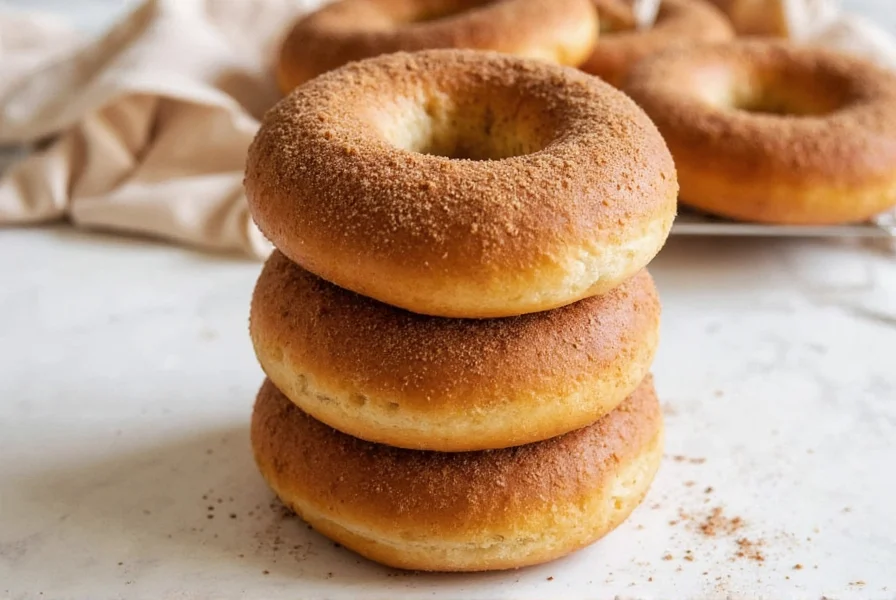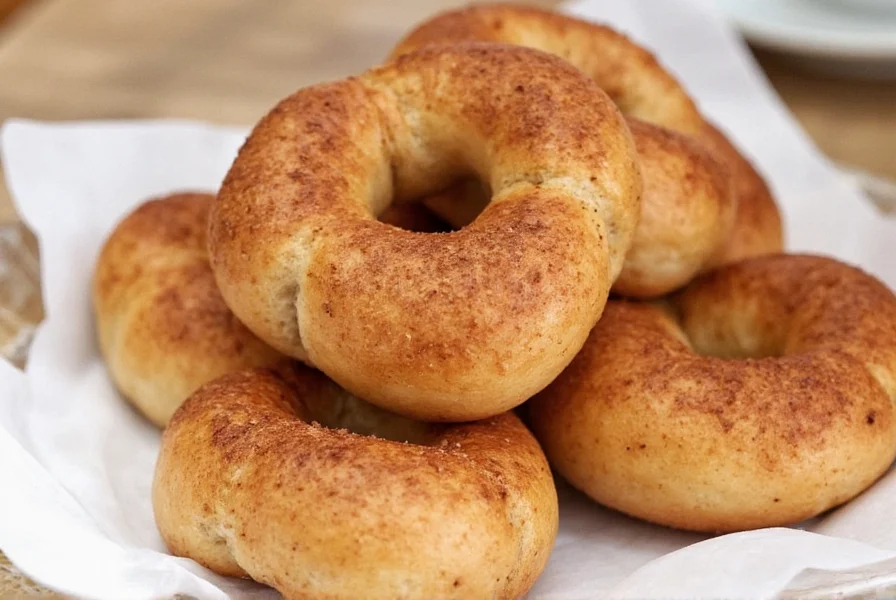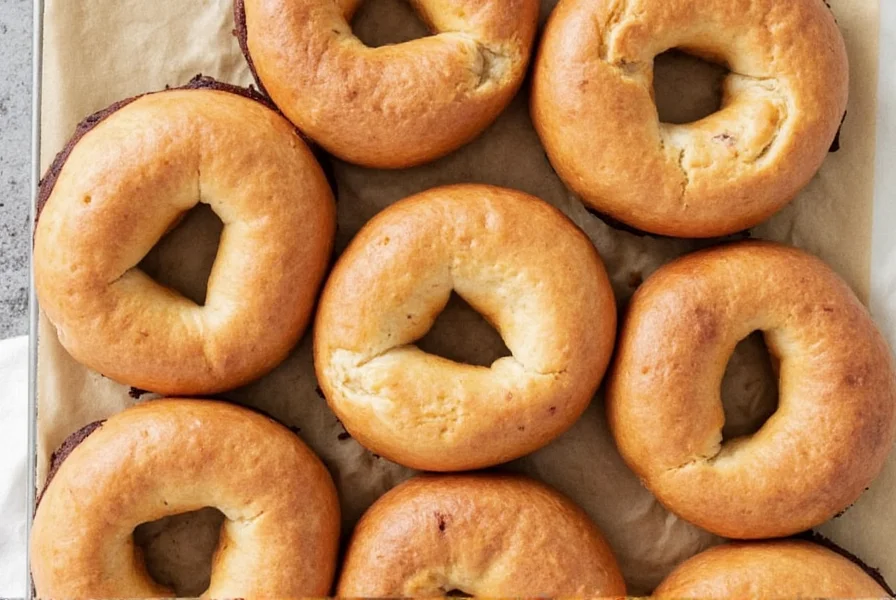If you've ever wondered what makes cinnamon bagels so irresistible, you're not alone. These sweet treats have become a staple in bakeries across North America, particularly in New York-style bagel shops. Unlike plain bagels, cinnamon bagels incorporate ground cinnamon directly into the dough or create a cinnamon swirl effect, resulting in a fragrant, flavorful bread product that satisfies both bagel enthusiasts and dessert lovers.
The History of Cinnamon Bagels
While traditional plain and seeded bagels trace their origins to Jewish communities in Poland, cinnamon bagels represent a more modern American innovation. Food historians believe sweetened bagel varieties emerged in the mid-20th century as Jewish immigrants adapted their recipes to American tastes. The first documented cinnamon bagel recipes appeared in Jewish-American cookbooks from the 1970s, though the exact origin remains debated among culinary experts.
Unlike their savory counterparts, cinnamon bagels gained popularity through mainstream American bakeries rather than traditional Jewish bakeries. By the 1990s, they had become a standard offering at major bagel chains across the United States, often paired with cream cheese flavors that complement their sweetness.
| Ingredient | Traditional Bagel | Cinnamon Bagel |
|---|---|---|
| Flour | High-gluten (2-3 cups) | High-gluten (2-3 cups) |
| Sugar | 1-2 tbsp | 3-4 tbsp |
| Cinnamon | None | 1.5-2 tbsp |
| Yeast | 2 tsp | 2 tsp |
| Water | 1 cup | 1 cup |
What Makes Cinnamon Bagels Special
The magic of cinnamon bagels lies in their balanced flavor profile. Unlike overly sweet pastries, well-made cinnamon bagels maintain the dense, chewy texture characteristic of quality bagels while delivering a subtle warmth from the cinnamon. The best homemade cinnamon bagel recipe incorporates cinnamon at multiple stages—both in the dough and as a topping—to create layered flavor complexity.
Professional bakers emphasize that the quality of cinnamon makes a significant difference. While many commercial bakeries use cassia cinnamon for its stronger flavor and lower cost, artisanal producers often prefer Ceylon cinnamon for its more delicate, complex notes. For the perfect bagel dough for cinnamon bagels, the cinnamon should be evenly distributed without overwhelming the yeast's ability to activate.

Classic Cinnamon Bagel Recipe
Creating authentic New York style cinnamon bagels at home requires attention to detail but yields impressive results. This traditional recipe produces eight perfectly chewy, flavorful bagels:
Ingredients
- 3 cups high-gluten bread flour
- 1.5 cups warm water (105-115°F)
- 2 tsp active dry yeast
- 3 tbsp granulated sugar
- 1.5 tbsp ground cinnamon (preferably Ceylon)
- 1.5 tsp salt
- 1 tbsp vegetable oil
- For topping: 1/4 cup sugar + 1 tbsp cinnamon mixed together
Step-by-Step Instructions
- Dissolve yeast and 1 tsp sugar in warm water; let sit until foamy (5-10 minutes)
- Mix flour, remaining sugar, cinnamon, and salt in large bowl
- Add yeast mixture and oil to dry ingredients; mix until dough forms
- Knead dough for 10 minutes until smooth and elastic
- Place in oiled bowl, cover, and let rise for 1 hour
- Divide dough into 8 equal portions; shape each into a ball
- Poke hole through center of each ball and stretch to form ring
- Cover and let rise 30 minutes
- Preheat oven to 425°F with rack in middle position
- Bring large pot of water to boil; add 2 tbsp sugar
- Boil bagels 1-2 minutes per side
- Remove, drain, and dip tops in cinnamon sugar mixture
- Place on parchment-lined baking sheet
- Bake 20-25 minutes until golden brown
- Cool on wire rack before serving

Proven Baking Tips for Perfect Results
Mastering the art of cinnamon bagel baking requires understanding several key techniques. First, the boiling step is non-negotiable—this crucial process creates the signature chewy texture by gelatinizing the outer starch layer. Many home bakers skip this step, resulting in bread-like rather than bagel-like texture.
When making cinnamon swirl bagels specifically, bakers should roll the dough into a rectangle after the first rise, sprinkle with cinnamon sugar, then roll and seal tightly before shaping into rings. This creates the distinctive swirl pattern that elevates your homemade cinnamon bagel recipe from ordinary to extraordinary.
Temperature control proves equally important. Water that's too hot will kill the yeast, while water that's too cool won't activate it properly. Similarly, oven temperature must be precise—too hot and the bagels will brown before cooking through; too cool and they'll become dense.
Serving Suggestions and Pairings
Cinnamon bagels shine when paired thoughtfully. While plain cream cheese remains a classic choice, consider these sophisticated pairings that enhance the cinnamon notes:
- Apple butter with a sprinkle of additional cinnamon
- Cinnamon honey cream cheese (mix 8 oz cream cheese with 2 tbsp honey and 1 tsp cinnamon)
- Vanilla mascarpone spread
- Maple walnut cream cheese
- Orange marmalade for a citrus contrast
For breakfast service, slice cinnamon bagels horizontally and toast lightly. The warmth releases the aromatic compounds in the cinnamon, creating an inviting scent that enhances the eating experience. Many professional chefs recommend toasting at 350°F for 5-7 minutes rather than using a standard toaster, which can dry out the bagels too quickly.
Storage and Reheating Techniques
Proper storage ensures your cinnamon bagels maintain their quality. Store cooled bagels in an airtight container at room temperature for up to 2 days. For longer storage, freeze individually wrapped bagels for up to 3 months.
When reheating, avoid the microwave, which creates uneven texture. Instead, thaw frozen bagels at room temperature, then:
- Oven method: 350°F for 7-10 minutes
- Toaster oven: Medium setting until warm throughout
- Steaming: Briefly hold over boiling water to restore moisture
These techniques preserve the chewy interior while reviving the crust, delivering bakery-quality results from your homemade cinnamon bagels.
Avoiding Common Mistakes
Even experienced bakers encounter challenges with cinnamon bagels. The most frequent issues include:
- Dense texture: Usually from insufficient kneading or under-proofing. Ensure proper gluten development through adequate kneading.
- Weak cinnamon flavor: Cinnamon loses potency when exposed to heat. Add some cinnamon after boiling for brighter flavor.
- Bagels spreading too much: Dough may be too wet or under-kneaded. Adjust water content and ensure proper gluten development.
- Burning during baking: Oven temperature may be inaccurate. Use an oven thermometer for precision.
- Uneven cinnamon distribution: When making swirl bagels, ensure even spreading of the cinnamon sugar mixture.
By addressing these common pitfalls, you'll consistently produce professional-quality cinnamon bagels that rival those from specialty bakeries.
Conclusion
Cinnamon bagels represent a delightful fusion of traditional bagel craftsmanship and sweet flavor innovation. Whether you're a home baker perfecting your technique or simply a fan of this beloved variation, understanding the history, ingredients, and methods behind cinnamon bagels enhances appreciation for this tasty treat. With the right approach to ingredients, preparation, and baking, you can create authentic cinnamon bagels that satisfy cravings while honoring the rich tradition of bagel making.
Frequently Asked Questions
What's the difference between cinnamon bagels and cinnamon raisin bagels?
Cinnamon bagels contain cinnamon flavoring throughout the dough or as a swirl, while cinnamon raisin bagels include both cinnamon and raisins. Traditional cinnamon bagels focus solely on the cinnamon flavor without additional mix-ins, creating a more uniform taste profile compared to the bursts of sweetness from raisins in the cinnamon raisin variety.
Can I make cinnamon bagels without boiling them?
While you can skip the boiling step, doing so fundamentally changes the texture. Boiling sets the exterior starch, creating the characteristic chewy texture of authentic bagels. Without boiling, the result resembles regular bread rolls rather than true bagels. For traditional New York style cinnamon bagels, boiling remains an essential step in the baking process.
Why do my homemade cinnamon bagels taste bitter?
Bitterness in cinnamon bagels typically comes from using too much cinnamon or low-quality cinnamon. Cassia cinnamon contains coumarin, which can taste bitter in larger quantities. Try reducing the cinnamon amount slightly or switching to Ceylon cinnamon, which has a sweeter, more complex flavor with less bitterness. Also ensure your cinnamon isn't expired, as stale spices can develop off-flavors.
How can I make my cinnamon bagels sweeter without adding more sugar?
To enhance sweetness without additional sugar, try adding 1-2 tablespoons of honey or maple syrup to the dough. You can also incorporate sweet ingredients like mashed banana or applesauce. Another technique is to brush finished bagels with a simple syrup glaze (equal parts water and sugar, heated until dissolved) immediately after baking, which adds sweetness without making the dough too wet during preparation.
Are cinnamon bagels considered a breakfast food only?
While commonly eaten for breakfast, cinnamon bagels work well throughout the day. Many people enjoy them as an afternoon snack, dessert, or even as a base for sweet sandwiches. Their versatility makes them suitable for various occasions beyond traditional breakfast service. Some bakeries even offer cinnamon bagel sandwiches with cream cheese and fruit for brunch menus.











 浙公网安备
33010002000092号
浙公网安备
33010002000092号 浙B2-20120091-4
浙B2-20120091-4